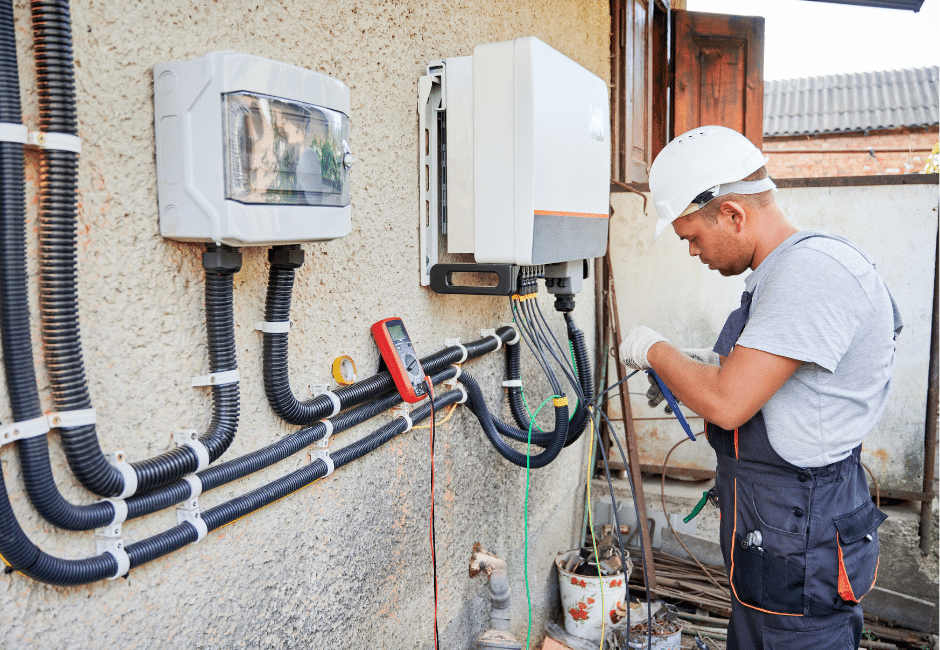September 26, 2023 5 min read

Electrical Code Compliance: Introducing the New 2023 NEC® Course Series
Industry:
Solution:

The National Fire Protection Association® (NFPA) updated the National Electrical Code in 2023, also known as NEC and NFPA 70. The NFPA regularly reviews and updates the NEC (with the last update occurring in 2020) to keep pace with evolving technology and safety issues across all 50 states. This latest update introduces several key changes, highlighting ground-fault circuit interrupters (GFCIs) and arc-fault circuit interrupters (AFCIs), as well as additional requirements to accommodate newer technologies that address emerging electrical challenges in our rapidly changing and evolving world.
To align with the 2023 NEC changes, we have released six online courses, and seven additional courses will be available next month, providing a total of 13 courses. These training programs help electrical professionals stay up-to-date with current NEC standards for their safety. The courses are being accredited for states that have already adopted the code and provide required Continuing Education (CE) hours towards an electrician’s license renewal in those states.
As many states have yet to adopt the 2023 NEC standards, Vector Solutions is prepared and eager to assist in getting your workforce compliant. Here is what you can expect from our courses:
- Instructor: Our courses are instructed by Subject Matter Expert Ryan Jackson, who is a NEC Instructor, Author, and key contributor to NEC Code-Making Panels 3 and 17, as well as UL Standard Technical Panels and the Steel Tube Institute.
- Flexible Learning: Access courses from anywhere, at any time, and on any device. We offer self-paced learning to accommodate any schedule.
- Engaging Content: Our courses feature interactive elements, real-world examples, and engaging activities to enhance your learning experience.
Who Is the National Fire Protection Association (NFPA)?

The National Fire Protection Association, or NFPA, is an international non-profit organization that’s dedicated to eliminating death, injury, property, and economic loss resulting from fire, electrical, and related hazards. As part of their mission, the NFPA develops numerous codes and standards, with NFPA 70, the National Electrical Code, being one of them.
What Is the National Electrical Code (NEC)?
The National Electrical Code, also known as NFPA 70, is described by the NFPA as follows: “Adopted in all 50 states, NFPA 70, the NEC, serves as the gold standard for ensuring the safe design, installation, and inspection of electrical systems to protect both individuals and property from electrical hazards.” This code undergoes periodic updates, with the most recent taking place in 2023.
What’s New?

In the new NFPA 70 edition code book, the NFPA has thoughtfully reorganized and consolidated all the code’s defined terms into an expanded Article 100 to help users locate critical content more quickly. The NFPA has made important changes related to emergency disconnects, ground-fault circuit interrupter protection, surge protection, and many other topics related to electrical safety, including:
- Clearer requirements for medium voltage installation
- New allowances for energy management systems
- Cybersecurity requirements for the evaluation of network-connected life-safety equipment
- Expansion of ground-fault circuit interrupters (GFCI) protection requirements
- Use and installation requirements for ultraviolet (UV) germicidal irradiation
Does Vector Solutions Offer Online NEC Training Courses?

Absolutely! We are releasing a series of courses to cover these changes to the NEC/NFPA 70. The first series of online training courses, includes the following titles:
- 2023 NEC Changes: Code-Wide Changes, New and Deleted Articles and Definitions
- 2023 NEC Changes: General Requirements
- 2023 NEC Changes: Branch Circuits
- 2023 NEC Changes: Feeders, Load Calculations, and Services
- 2023 NEC Changes: General Requirements for Wiring Methods, Conductors, and Enclosures
- 2023 NEC Changes: Wiring Methods
The second series, includes these titles:
- 2023 NEC Changes: Overcurrent Protection Overvoltage Protection, and Grounding and Bonding
- 2023 NEC Changes: Devices and Panelboards
- 2023 NEC Changes: General Use Equipment
- 2023 NEC Changes: Special Occupancies
- 2023 NEC Changes: Special Equipment
- 2023 NEC Changes: Alternative Energy and Limited Energy
- 2023 NEC Changes: Fire Pumps and Emergency Systems
Who Might Be Interested in These Courses?
These NEC 2023 courses are essential to many industries and particularly beneficial to the following job titles:
- Electrical Contractors
- Electricians
- Electrical Engineers
- Maintenance Electricians
- HVAC Maintenance and Repair Technicians
- Plant & Facility Maintenance Technicians
- Building Engineers
- Building Managers & Superintendents
- Plant & Facility Managers
- Energy Management Personnel
- Safety Directors
Begin Your NEC 2023 Online Training Courses Now to Keep Your Certification Up-to-Date!
Why wait? Maintain your license with the latest standards and industry knowledge today. If you need access to the NEC 2020 courses, those are available as well. Feel free to reach out and let us know how we can assist you.
Architecture, Engineering and Construction Training Course Catalog
Vector Solutions’ industry-leading online course library includes engaging courses developed to meet continuing education requirements and enhance critical skills.
View Catalog













